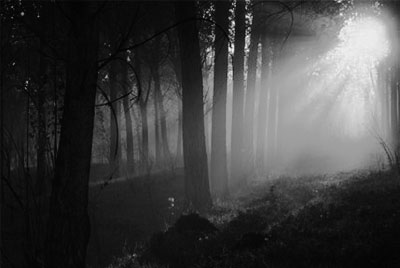December 2010 - Vol. 45  . .
There is no darkness in him at all . by Tadhg Lynch Just to be different
Imagine my chagrin last year when, on the first of February, I announced to my housemates that Spring had begun and was roundly accused of being an idiot, or at least unable to count. Things got worse when the high moral ground from which I was pontificating to a household of Americans and Lebanese was ripped from beneath my feet by my fellow Irishman from Belfast who weighed in on the side of the foreigners and told me that Spring did not begin until the 21st of March...Outgunned, betrayed and effectively silenced, I had to maintain a huffy silence for another six weeks until Spring “really” began. For some reason, the Irish in the south of the Island continue to follow the old “Celtic” calendar counting both the vernal and autumnal equinox as the middle of the seasons, instead of their first day. The longest day of the year – the 21st of June – thus becomes midsummer, while every other season (relative to the rest of the world it seems) begins about six weeks before it should. Ireland’s weather never varies all that much (a sort of persistent dampness is probably applicable to most times of the year) but its’ northerly latitude, equivalent to Hudson Bay in Canada and Moscow in Russia, allied to our somewhat individual method of counting the seasons means that light is at a premium as autumn progresses. Winter, which starts for us on the first of November, is long and dreary and dark. Light and dark
“Light” however, began four days before Christmas with the shortest day of the year. From this time forth, though the days were at their shortest and the weather its’ coldest, things began to look up. Christmas, presents, New Year, new starts, new hope fell in a bundle around the turn of the year while days, light and the “after homework” time lengthened imperceptibly every day until the advent of “Spring” on the 1st of February brought something to really rejoice about. Though there is little historical agreement on the matter, the first letter of John to the Christians of the early church would seem to have been written at a time of at least intermittent if not systemic persecution of the community. Amid the attacks on the leaders of the early church and heterodox teaching arising to corrupt the believers and the charms, illusions, and snares of the world waiting to entrap them, John writes simply and profoundly to the believers of Jesus Christ that; “God is light and in him there is no darkness at all” (1 John 1:5). To the first century Mediterraneans, and perhaps even more to their less civilised Celtic brethren some centuries later, light was the symbol of hope, joy and life. The illuminating power of the sun for those who did not have dependable sources of light at all times of the day and night is perhaps less easy for those of us who live in modern times to grasp, but it is still imaginable. The main source of light for the early Christians, John writes, is God. He is the one source who illumines everything else – in fact, he is what makes everything else truly visible. In between
Light and Dark – complete opposites. Sin and Life in Christ – as opposite as light and dark. John writes, “You know that he was revealed to take away sins, and in him there is no sin.” Such a stark truth – in him there is no sin. In him there is no darkness at all. The early church knew something about darkness – they knew enough to place one of their major feasts at a time when the hemisphere was shrouded in night and dark – when the people would need to remember the hope for which they called themselves Christians in the first place. John addresses the Christians from this reality. Light is fading from this world. It is growing dark. It won’t be here for very long. Walk in the light
of Christ
[Tadhg Lynch is a Kairos
Mission Leader serving in the Europe and the MiddleEast region of the Sword
of the Spirit and is an affiliate in the Servants
of the Word.]
|
. | |
|
publishing address: Park Royal Business Centre, 9-17 Park Royal Road, Suite 108, London NW10 7LQ, United Kingdom email: living.bulwark@yahoo.com |
. |